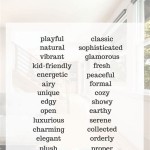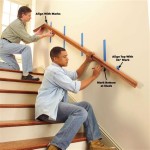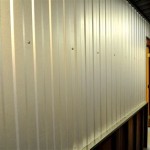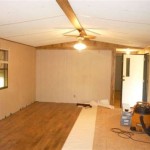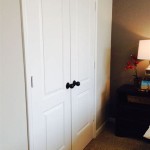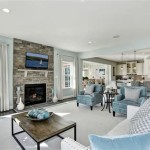How Much Does It Cost to Paint Interior Walls?
Determining the cost of painting interior walls involves a multifaceted evaluation considering several key factors. These factors contribute to the overall expense, influencing the final price a homeowner can expect to pay. This article will explore those elements in detail, providing a comprehensive understanding of the cost landscape for interior painting projects.
While providing an exact, universal price is challenging due to the variability of each project, a general range can be established to offer a starting point. The national average cost to paint interior walls typically falls between $1.50 and $4.00 per square foot. This range encompasses labor and material costs. However, this is merely an average, and actual expenses can fluctuate significantly based on the specific requirements of the project and the prevailing rates in a given geographic location.
The square footage of the area being painted is one of the most significant determinants of cost. A larger area naturally requires more paint and more labor hours, resulting in a higher overall expense. However, the price per square foot often decreases slightly for larger projects due to economies of scale. This happens because setting up and mobilizing costs are spread over a larger area, reducing the per-unit cost.
Beyond the sheer size of the area, the complexity of the project also plays a crucial role. Factors such as the number of coats required, the condition of the existing walls, and any necessary preparation work will directly impact the final cost. Walls in poor condition that require extensive repair or cleaning will invariably incur higher labor costs. Rooms with intricate trim, numerous windows, or high ceilings will also demand more time and precision, thus increasing the overall expense.
Key Point 1: Factors Influencing Paint Cost
The type of paint selected significantly affects the overall cost of the project. Different types of paint vary substantially in price, durability, and application requirements. Lower-quality paints might be tempting due to their lower upfront cost, but they often require more coats to achieve the desired coverage and may not offer the same level of durability as higher-quality options. This can lead to increased material costs and potentially higher labor costs due to the need for additional coats.
Consider different paint finishes as well. Matte, eggshell, satin, semi-gloss, and gloss finishes all have distinct properties and are suited for different applications. Typically, higher-gloss finishes are more expensive and require more skill to apply, which can further affect labor costs. The paint finish should be selected based on the room's function and the desired aesthetic, but it's also important to consider the budget implications of that choice.
Furthermore, the brand of paint chosen also impacts the cost. Premium brands often come with a higher price tag, but they may offer superior coverage, durability, and color retention. Generic or less-established brands may be more affordable, but their performance may be less consistent, potentially leading to a less satisfactory finished product and potentially needing more frequent repainting in the long run.
In addition to the paint itself, other materials also contribute to the overall expense. These include primer, painter's tape, drop cloths, brushes, rollers, and patching compounds. The quality and quantity of these materials can affect the final cost, although generally to a smaller degree than the paint itself.
Key Point 2: Labor Costs and Preparation
Labor costs account for a significant portion of the total expense for interior painting. Painters typically charge by the hour, by the day, or by the square foot. Hourly rates can vary depending on the painter's experience, qualifications, and the prevailing rates in the local market. Similarly, daily rates will reflect the same factors but provide a fixed cost for a full day's work.
The complexity of the job greatly influences labor costs. This includes the height of the ceilings, the presence of intricate trim work, and the number of obstacles within the room. Rooms with high ceilings often require the use of ladders or scaffolding, which increases the time and effort required to complete the job.
Preparation work is a crucial step that often contributes significantly to labor costs. This includes tasks such as cleaning the walls, filling holes and cracks with patching compound, sanding rough surfaces, and applying primer. Walls that are in poor condition may require more extensive preparation work, which will directly increase the labor costs. Proper preparation is essential for ensuring a smooth and even paint finish, so it should not be overlooked in an attempt to save money.
Priming is another essential step that heavily affects the labor cost. Applying primer creates a uniform surface that helps the paint adhere properly and provides better coverage. If the walls are previously painted with a dark color or are stained, priming is particularly important to prevent the old color from bleeding through the new coat of paint. The number of coats of primer required can also affect the labor cost.
Removing wallpaper or other wall coverings is often required before painting. This can be a time-consuming and labor-intensive task, especially if the wallpaper is old or has been improperly installed. The labor cost for removing wallpaper will depend on the type of wallpaper, the condition of the walls underneath, and the size of the area being covered.
Key Point 3: Regional Price Variations and Additional Costs
The cost of interior painting can also vary significantly depending on geographic location. Labor costs and material prices tend to be higher in urban areas and regions with a higher cost of living. Rural areas typically have lower labor costs and material prices, but the availability of qualified painters may be more limited.
Obtaining multiple quotes from different painters is essential for determining the prevailing rates in a particular area. Comparing quotes allows homeowners to negotiate prices and ensure they are getting a fair deal. It's important to consider not only the price but also the painter's experience, qualifications, and reputation.
Unexpected costs can sometimes arise during an interior painting project. These may include unforeseen repairs to the walls, additional coats of paint required to achieve the desired coverage, or the need for specialized equipment. It's wise to budget for potential unexpected costs to avoid any surprises during the project.
Moving furniture and protecting flooring are additional considerations. Some painters include these services in their bid, while others may charge extra. If homeowners choose to move furniture themselves, they can reduce the labor costs associated with the project.
The time of year can also influence the cost of interior painting. Painters may be busier during certain times of the year, such as the spring and summer months, which can lead to higher prices. Scheduling the project during the off-season, such as the fall or winter, may result in lower labor costs.
Finally, be wary of excessively low bids. A significantly lower price than other quotes may indicate that the painter is cutting corners, using low-quality materials, or lacks the necessary experience. It's important to thoroughly vet any painter before hiring them, regardless of the price.
Ultimately, the cost of painting interior walls is a complex equation with many variables. Careful planning, realistic budgeting, and thorough research are crucial for ensuring a successful and affordable painting project.

Cost To Paint Walls A Pro Painter Breaks Down The Costs

The Cost Of Painting A Room With Benjamin Moore Paint

How Much Does Interior Painting Cost Castle Complements

How Much For A Professional To Paint House Interior Ina Painting And Pressure Cleaning

How Much Does It Cost To Paint A Living Room Paintzen

2025 Interior Painting Costs Average Cost To Paint Of House

This Is How Much I Charge To Paint Interior Walls

How Much Does It Cost To Paint A House Interior Taskrabbit Blog

Interior Painting Cost Beaverton Or Maller Company

Cost To Paint Interior Of House In 2025
Related Posts

